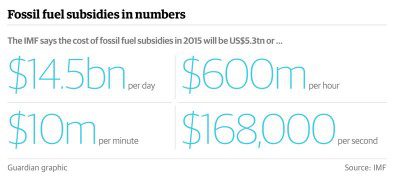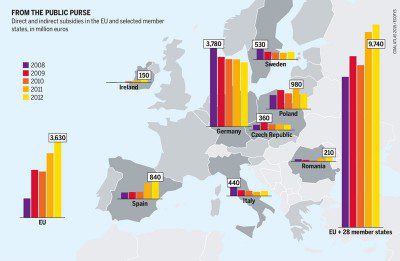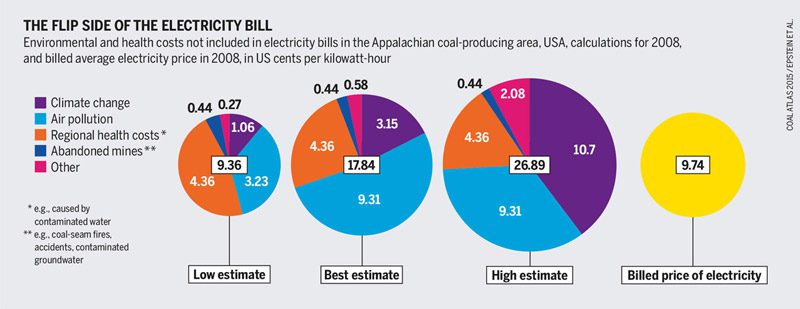Scientists with the IPCC have spent decades figuring out what is causing global warming and found out that the gas responsible for most of the warming is carbon dioxide [: CO₂]. The burning of fossil fuels [: coal,oil, gas] is responsible for 2/3rd of the carbon dioxide emissions.

The IMF, one of the world’s most reliable financial institutions, says the figure is an “extremely robust estimate” of the true cost of fossil fuels and that ending subsidies for fossil fuels would cut global carbon emissions by 20%.
The estimated sum of fossil fuel subsidies for 2015 is higher than the amount all governments spend on health care annually. IMF
G20 fossil fuel subsidy phase out
In September 2009, the G20 agreed to phase fossil fuel subsidies out – with little progress. The ODI Report “Empty promises: G20 subsidies to oil, gas and coal production” documents the scale and structure of fossil fuel production subsidies in the G20 countries. It finds that the G20 are creating a ‘lose-lose’ scenario. They are directing large volumes of finance into high-carbon assets that cannot be exploited without huge climate impact.
https://youtu.be/FW9xomVitaI
Hidden costs of coal power
Coal is the dirtiest fuel in terms of carbon emissions and is the greatest beneficiary of subsidies [: above 50%]. Oil gets about a third of the subsidies and gas the rest.

If climate, environment and health damage by coal power production were taken into account, the price for a kilowatt-hour would look radically different and the electricity bills would rise.
In Germany, the government puts the environmental costs at around 11 Euro cents per kilowatt-hour for lignite and 9 cents for hard coal. In the USA a coal-fired kilowatt-hour would have to cost between 9 and 27 US cents more than the mean 10 cents.

The Coal Atlas published by Heinrich Böll Foundation and Friends of the Earth International contains the latest facts and figures on the use of coal and its impact on nature, health, labour, human rights and politics.